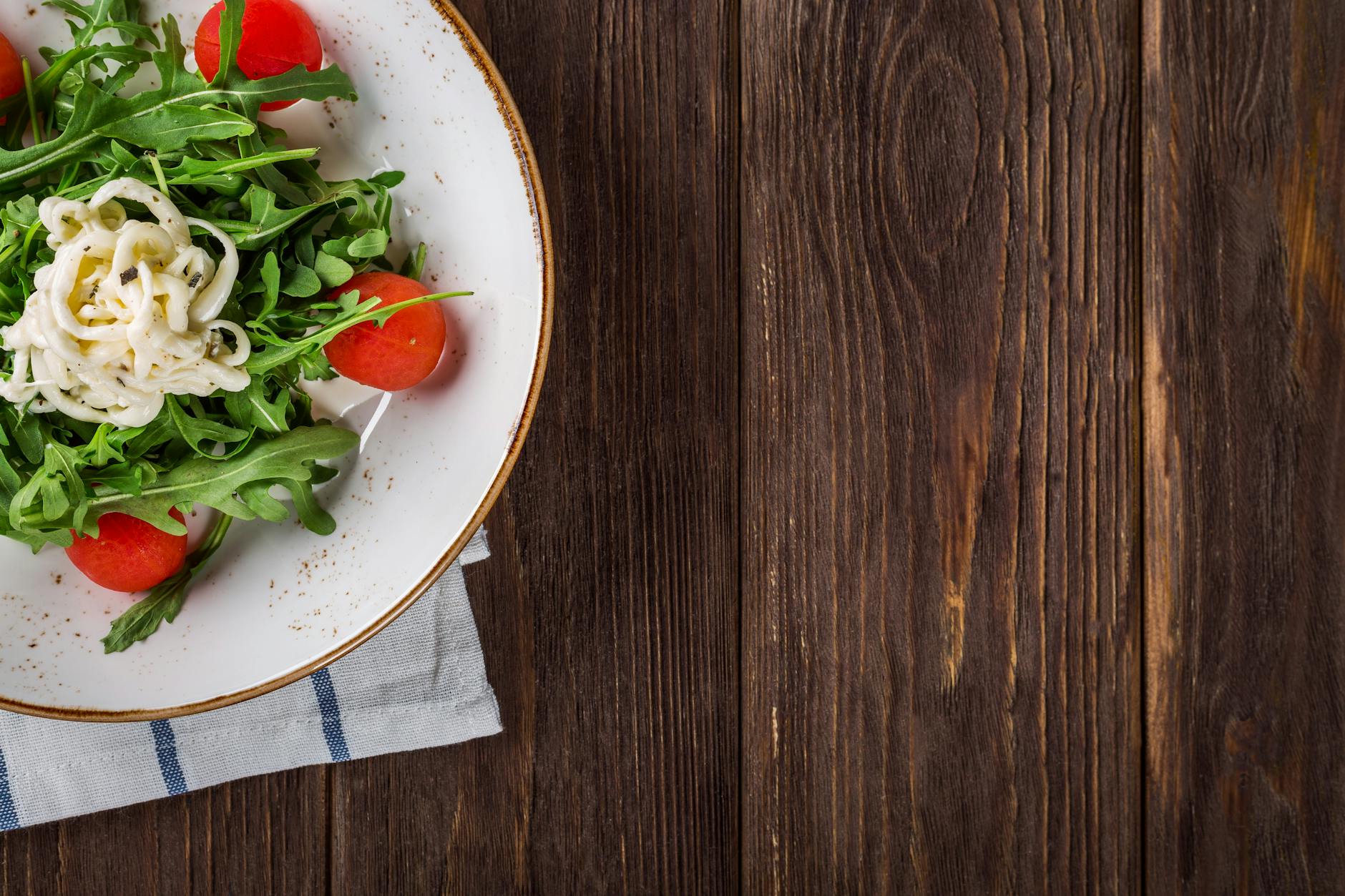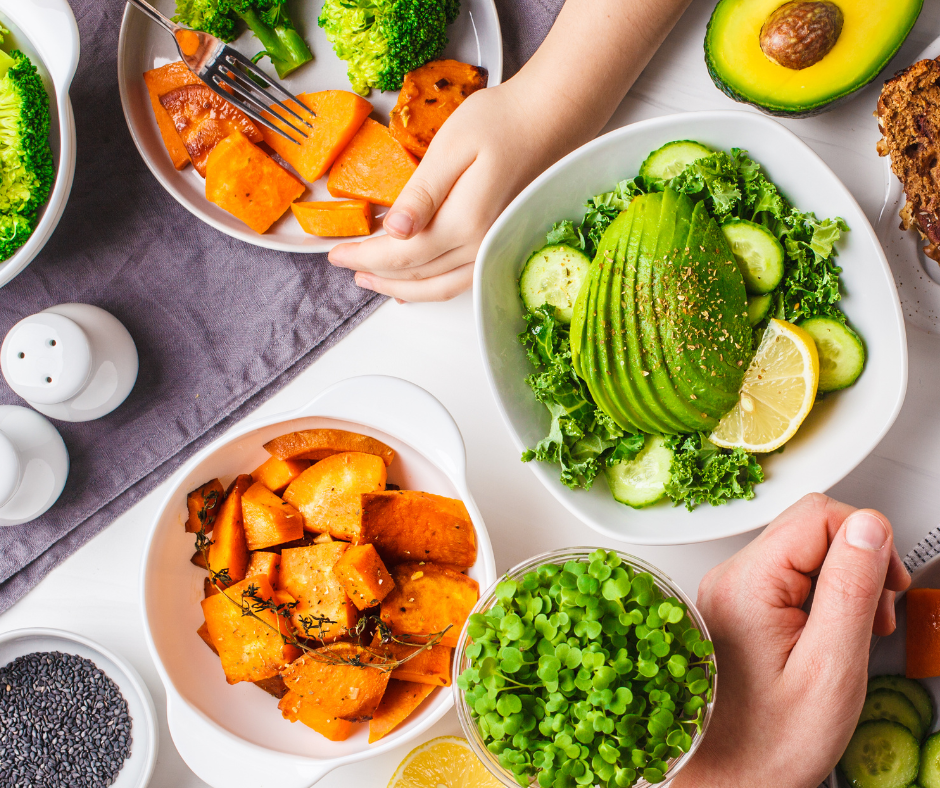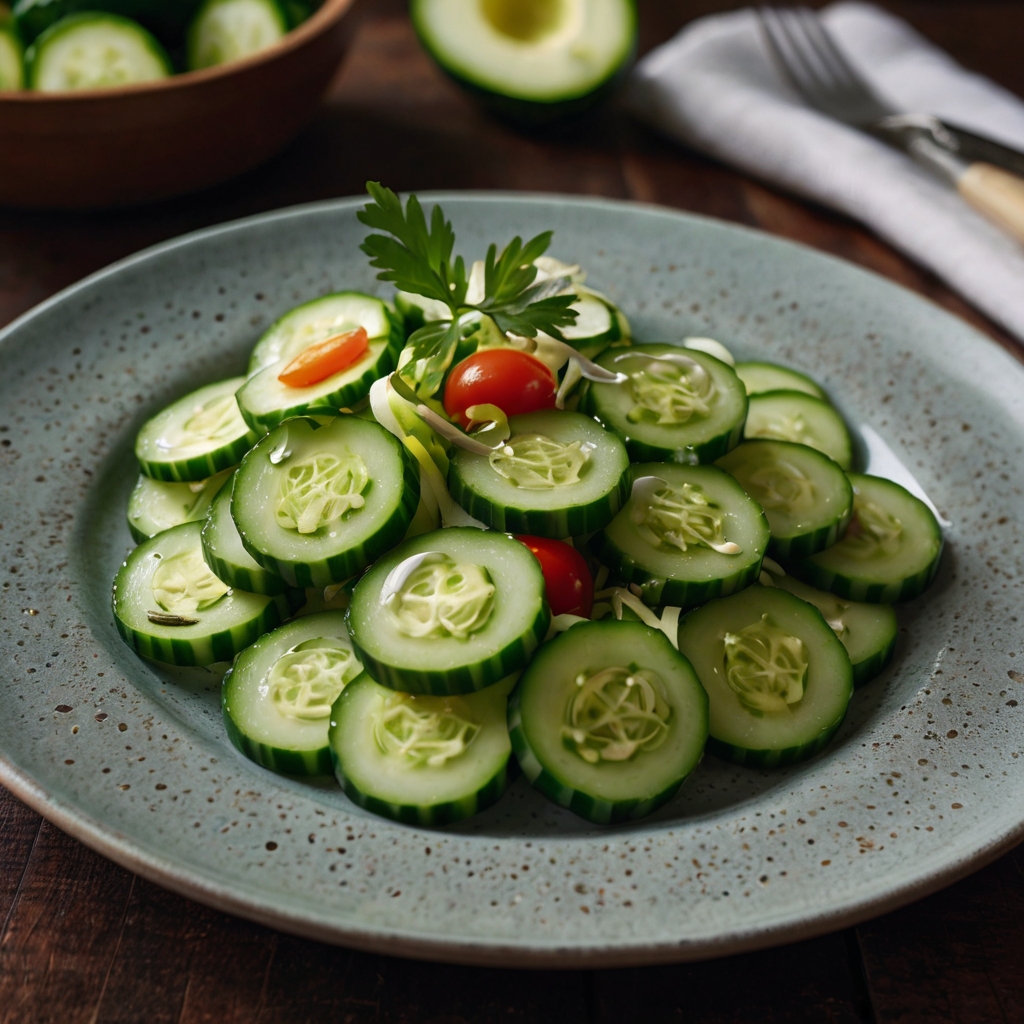Eating healthy doesn’t have to be complicated, even on the busiest evenings. Finding time to whip up a nutritious dinner can feel overwhelming when life gets hectic, but it’s not impossible. With the right ideas, you can create meals that are simple, satisfying, and good for you—even on a packed schedule. In this post, you’ll find healthy dinner options designed to save time while keeping flavor and nutrition in balance.
Why Choosing Healthy Dinners Matters
A nutritious dinner is more than just a meal; it’s a cornerstone of overall wellness. What you eat in the evening affects your body’s ability to recover, sleep soundly, and prepare for the day ahead. Choosing healthy options can improve your energy, mood, and even long-term health outcomes. Let’s break down why a balanced and thoughtful dinner is crucial.
The Role of Nutritional Balance in Dinner
When it comes to dinner, balance is everything. The right mix of proteins, healthy fats, and carbohydrates ensures your evening meal fuels your body without overloading it. Proteins like lean chicken, beans, or tofu not only keep you fuller for longer but also help repair body tissues overnight. Healthy fats, such as those in avocados or olive oil, support brain function and heart health. Carbohydrates, especially from whole grains or vegetables, provide the steady energy your body needs.
If you skip or overload any of these nutrients, your body might struggle to recover properly overnight. Think of it like balancing an equation—without a purposeful mix, you’re either undernourished or causing unnecessary strain. For more on how nutritional decisions at dinner time impact health, check out this article from Hopkins Medicine.

Photo by Pixabay
Impact of Poor Dinner Choices
Unhealthy dinner habits can ripple through your life in unexpected ways. For starters, meals packed with simple carbs or processed foods can spike your blood sugar, giving you a quick energy high followed by a harsh crash. This not only leaves you feeling sluggish but also impairs the restorative processes your body needs during sleep.
Additionally, heavy dinners loaded with fats or sugars disrupt digestion during the night, which can lead to bloating, poor sleep quality, and grogginess the following morning. Over time, these habits contribute to weight gain, insulin resistance, and even an increased risk of chronic diseases like heart problems or diabetes. Read more about the harmful effects of unhealthy meals at Healthline.
Whether it’s dinners eaten on the fly or fast food grabbed out of convenience, the consequences are far-reaching. Choosing healthier alternatives today can prevent a lifetime of issues tomorrow.
Quick and Easy Healthy Dinner Ideas
When life gets busy, dinner often becomes an afterthought. But healthy eating doesn’t have to take hours or leave you with a pile of dirty dishes. Whether you’re craving something hearty, quick, or prepped ahead of time, these healthy dinner ideas will make weeknights a breeze.
One-Pan Meals
One-pan meals are perfect for busy nights. They require minimal prep, fewer dishes, and deliver big on flavor.
- Baked Salmon with Vegetables: Layer salmon fillets with vibrant veggies like bell peppers, zucchini, and cherry tomatoes on a baking sheet. Drizzle with olive oil and season with herbs. Roast at 400°F for 20 minutes, and voilà—a protein-packed, nutrient-dense meal.
- Sheet Pan Chicken Fajitas: Slice chicken breasts, bell peppers, and onions, then toss with chili powder, cumin, and paprika. Spread everything onto a sheet pan and bake. Serve with whole-grain tortillas or lettuce wraps for a low-carb option.
If you’re craving more one-pan inspiration, check out Seventeen Healthy Sheet Pan Dinners for easy recipes that simplify cleanup.

Photo by Dana Tentis
15-Minute Dinner Ideas
Even if you only have a few minutes to spare, you can still pull together a healthy and tasty meal.
- Stir-Fried Tofu and Vegetables: Chop some tofu and a mix of your favorite veggies (think broccoli, carrots, and snap peas). Stir-fry with garlic, ginger, soy sauce, and a splash of sesame oil. Serve over brown rice or quinoa for a complete dish in no time.
- Avocado Toast with Poached Egg: Spread mashed avocado on whole-grain bread, add a poached egg, and sprinkle with chili flakes and sesame seeds. It’s satisfying, nutrient-rich, and ready in minutes.
For more fast and filling options, find creative ideas at Healthy 15 Minute Dinner Recipes.
Healthy Slow Cooker Recipes
When you know your evening will be chaotic, a slow cooker can be your best friend. Dump the ingredients in the morning, and come home to a meal that’s ready to serve.
- Lentil Soup: Add lentils, diced carrots, celery, onions, and spinach to the slow cooker with vegetable broth and seasonings. Let it simmer all day for a comforting, fiber-rich meal. Pair with whole-grain bread for extra sustenance.
- Shredded Chicken Tacos: Toss chicken breasts, salsa, and taco seasoning into the slow cooker. After a few hours, shred the chicken and serve with corn tortillas, guacamole, and fresh cilantro.
Discover more make-ahead options at Food Network’s Healthy Slow Cooker Recipes.
By incorporating these simple ideas into your weeknight routine, you can enjoy nutritious meals without feeling overwhelmed.
Kid-Friendly Healthy Dinners
Making healthy dinners that kids will actually eat can feel impossible, especially if you’re dealing with picky eaters. The trick is to create meals that are as fun and appealing as they are nutritious. From sneaking veggies into classic recipes to recreating their favorite meals with a healthier twist, here are some strategies to win over your kids’ taste buds while keeping their plates balanced.
Hidden Vegetable Recipes

Photo by cottonbro studio
Kids and vegetables don’t always get along. Luckily, there are creative ways to sneak veggies into meals without them noticing. Here are a few ideas that not only pack a nutritional punch but also keep things kid-approved:
- Zucchini Noodles (“Zoodles”): Swap out traditional pasta with spiralized zucchini. Toss them in marinara sauce or creamy alfredo to mimic the texture of spaghetti. It’s a simple way to add more greens without complaints! For extra inspiration, check out hidden veggie recipes kids will love.
- Cauliflower Crust Pizza: This is pizza night, but healthier! Use blended cauliflower as a base for your crust. Top it with cheese, tomato sauce, and their favorite toppings—they’ll never guess it’s anything but delicious.
- Blended Veggie Sauces: Add pureed carrots, spinach, or butternut squash to spaghetti sauces, soups, or stews. It blends seamlessly into the texture and color of most dishes. Try recipes like hidden veggie mac and cheese for a cheesy dish that’s secretly healthy.
Not only do these ideas make veggies less intimidating for kids, but they also make family meals more enjoyable—and stress-free for you!
DIY Healthy Versions of Favorite Meals
Kids love their comfort foods, but those meals often come loaded with excess fats, sugars, and artificial ingredients. The good news? You can recreate these favorites at home with a healthy twist. Here are a few kid-approved examples:
- Homemade Chicken Nuggets: Skip the deep fryer and try oven-baked nuggets made from lean chicken breast coated in whole-grain breadcrumbs. Use a yogurt-based dip for an even healthier choice. Find more ideas in this collection of healthy dinners for kids.
- Mac and Cheese with Veggies: Take a classic box of mac and cheese up a notch by mixing in pureed sweet potatoes or cauliflower for extra nutrition. You’ll maintain the creamy goodness while sneaking in essential vitamins.
- Veggie-Packed Burgers: Swap out traditional beef patties for turkey or veggie burgers. Chop up carrots, zucchini, or mushrooms to mix into the mixture for added nutrients and flavor.
By reinventing these classics, you’re giving your kids the comfort foods they crave while ensuring that mealtime isn’t just tasty, but also nourishing. Explore additional healthier options with EatingWell’s kid-friendly recipes.
Plant-Based Healthy Dinner Options
Eating plant-based doesn’t mean compromising on taste or nutrition. Whether you follow a vegan or vegetarian diet, there are endless options to create delicious, satisfying meals. Below, we’ll explore protein-packed vegan dishes and comforting vegetarian classics that fit seamlessly into your healthy dinner plans.
Vegan Protein-Packed Dishes
When it comes to vegan meals, protein is often the first concern. Fortunately, there are plenty of plant-based options that deliver both flavor and the nutrients your body needs. Let’s explore a couple of standout dishes.
- Quinoa-Stuffed Bell Peppers: These vibrant bell peppers are filled with a mix of quinoa, black beans, tomatoes, and spices, then roasted to perfection. Quinoa is a complete protein, offering all nine essential amino acids, making it a fantastic choice for plant-based eaters. You can top the peppers with a dollop of guacamole or a sprinkle of nutritional yeast for added flavor.
- Chickpea Curry: A steaming plate of chickpea curry not only warms your soul but also packs in plenty of protein and fiber. Simmer chickpeas in a creamy coconut milk base seasoned with turmeric, cumin, and coriander. Serve it over brown rice or with a side of naan for a nourishing, filling meal.
If you want to elevate your vegan meal game, check out recipes like high-protein options here or here.

Photo by Shameel mukkath
Vegetarian Comfort Foods
Vegetarian dinners don’t just sit well with your body—they comfort your soul. These dishes take classic flavors and boost them with wholesome, nutrient-rich ingredients.
- Spinach and Ricotta Stuffed Shells: Pasta shells filled with creamy ricotta cheese, fresh spinach, and a sprinkle of nutmeg, baked in marinara sauce until bubbly and golden. It’s a crowd-pleaser that delivers both comfort and nutrition. Pair it with a simple side salad to complete the meal.
- Vegetable Stir-Fry with Tofu: Loaded with colorful veggies like snap peas, carrots, and bell peppers, this stir-fry gets a nutrient upgrade with crispy tofu cubes. It’s cooked in a savory garlic-soy sauce and served over brown rice or quinoa for a balanced, satisfying dinner.
For heartwarming vegetarian inspiration, explore more meatless comfort options here or here.
With the vibrant flavors and hearty profiles of these dishes, plant-based dinners are anything but boring. Whether you’re already vegan or vegetarian—or just dabbling—you’ll find plenty to love.
Tips for Meal Planning and Prep
Meal planning and prep are essential if you want to maintain healthy eating habits while saving time and effort during the week. Whether you’re a seasoned pro or just starting out, effective planning can make weekday dinners simpler and more enjoyable.
Batch Cooking Ideas
Batch cooking is a lifesaver for those busy weeknights when cooking from scratch feels impossible. By preparing meals in bulk, you can freeze portions, reheat them when needed, and enjoy homemade dinners with minimal effort.
Here are a few batch cooking ideas to get you started:
- Vegetarian Chili: Packed with beans, tomatoes, and veggies, chili freezes beautifully and tastes even better as leftovers. Prepare a large pot on Sunday and freeze in individual containers for easy weeknight meals.
- Casseroles: Dishes like spinach and mushroom lasagna, or chicken and broccoli casserole, are perfect for batch cooking. Make a double portion and freeze one for later.
- Soups and Stews: Lentil soup, beef stew, or butternut squash soup—all of these are ideal for freezing and reheating on cold evenings.
Looking to explore more batch cooking dishes? Check out this Beginner’s Guide to Meal Planning for tips and recipe ideas.
Ingredient Prep Strategies
Ingredient prep is about working smarter, not harder. Spending a little time upfront in the kitchen can drastically reduce the time needed to cook throughout the week. Here’s how you can streamline your meal prep:
- Chop Vegetables in Advance: Prep vegetables like bell peppers, carrots, and onions on the weekend. Store them in airtight containers in the fridge for quick use in stir-fries, salads, or roasted dishes.
- Pre-Cook Proteins: Grill or bake chicken breasts, cook ground turkey, or boil eggs ahead of time. This allows you to create salads, wraps, or casseroles without starting from scratch.
- Make Sauces and Marinades: Whip up a batch of pesto, curry paste, or tomato marinara and store it in the fridge or freezer. They’re meal enhancers that save time and boost flavor.
For more inspiration, visit A Beginner’s Guide To Healthy Meal Prep.

Photo by Ella Olsson
Balancing Flavors and Textures
Healthy meals don’t have to be bland or boring. By balancing flavors and textures, you can turn any dish into a feast for the senses. Here are some tips to make your meals more enjoyable:
- Add Crunch: Sprinkle toasted nuts, seeds, or croutons on salads and soups to introduce a satisfying crunch.
- Incorporate Freshness: Use fresh herbs like cilantro, parsley, or basil to brighten up flavors. A squeeze of lemon or lime can elevate the taste of soups, stir-fries, or roasted veggies.
- Mix Textures: Combine soft and crispy elements—think creamy mashed sweet potatoes paired with roasted chickpeas.
- Season Thoughtfully: A pinch of smoked paprika, cumin, or chili flakes can transform a simple dish into something exciting.
Balancing textures and flavors turns healthy eating into an adventure for your palate. Learn more about creating satisfying meals with Meal Prep Strategies.
By utilizing these tips, you can make meal preparation stress-free while keeping dinner time delicious and nutritious.
Budget-Friendly Healthy Dinner Options
Eating healthy on a budget is easier than you might think. With a few strategic choices, you can create nutritious, satisfying meals without overspending. By focusing on affordable proteins and seasonal produce, you can stretch your dollar further while keeping your dinner table wholesome.
Affordable Protein Choices

Photo by Alesia Kozik
Proteins don’t have to cost a fortune to be healthy. Here are a few budget-friendly options to incorporate into your dinners:
- Eggs: Packed with nutrients, eggs are incredibly versatile and affordable. From a simple vegetable omelet to shakshuka, they make for a quick, protein-rich dinner.
- Canned Beans: Black beans, chickpeas, and lentils are excellent sources of plant-based protein. Use them in soups, salads, or even burgers for an affordable yet filling meal.
- Frozen Fish: Frozen alternatives like tilapia or salmon filets are cheaper than fresh but just as nutritious. They’re easy to bake or pan-sear for a healthy, budget-friendly dinner.
For more creative ideas, check out these budget-friendly healthy meal ideas that are both affordable and satisfying.
Seasonal Produce for Savings
Eating in-season produce not only supports local farmers but also significantly reduces costs. Seasonal fruits and vegetables are often cheaper and tastier than their off-season counterparts.
Here’s how to make the most of seasonal produce:
- Plan Around the Season: In spring, think asparagus and spinach. During summer, focus on zucchini and tomatoes. Fall brings hearty delights like squash and sweet potatoes, while winter is perfect for cabbage and carrots.
- Shop at Farmer’s Markets or Join a CSA: Community Supported Agriculture (CSA) programs and local markets often sell produce at lower prices than supermarkets.
- Preserve for Later: Buy in bulk and freeze, can, or dry any surplus for future use. This extends the life of your produce and saves money long term.
For a detailed guide on what’s in season, check out the SNAP-Ed Seasonal Produce Guide. Or use the Seasonal Food Guide to discover cost-effective produce month by month.
By focusing on affordable proteins and taking advantage of seasonal savings, you can keep your dinners healthy while staying within your budget.
Conclusion
Healthy dinners don’t need to be complicated or time-consuming. Small, smart choices—like prepping ingredients, experimenting with nutrient-packed recipes, or batching meals for the week—can transform the way you eat. These ideas are designed to fit your lifestyle, whether you’re cooking for family, trying plant-based meals, or sticking to a budget.
Start with one new recipe or tip from this post and build from there. Consistent, simple steps toward healthier eating can make a big difference over time. What will you try first?


